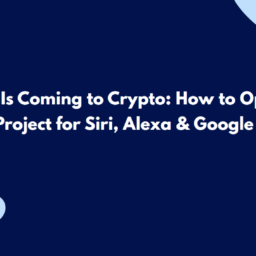Artificial Intelligence (AI) has revolutionized content creation, enabling businesses to generate text, images, and videos with unprecedented speed and efficiency. However, as AI-generated content becomes more prevalent, concerns about maintaining authenticity and a genuine connection with audiences have emerged. Striking a balance between leveraging AI and preserving the human touch is key to successful content marketing. Here’s how you can use AI-generated content without losing authenticity.
1. Define Your Brand Voice Clearly
What It Is: Your brand voice is the unique personality and style that characterize your communication with your audience.
Why It Matters: Consistency in brand voice is essential for building trust and recognition. When using AI, it’s crucial to ensure that the generated content aligns with your established tone and style.
How to Do It:
- Set Guidelines: Develop comprehensive guidelines that outline your brand’s voice, tone, and style. Include examples of preferred language, key phrases, and the overall messaging approach.
- Train the AI: Many AI tools allow customization. Spend time fine-tuning the AI to reflect your brand’s voice by providing examples and feedback on the generated content.
2. Use AI for Inspiration, Not Replacement
What It Is: AI can generate content ideas, outlines, or even draft text, but it should not replace the human touch entirely.
Why It Matters: While AI can produce content quickly, it lacks the nuanced understanding of context, culture, and emotion that humans bring to writing.
How to Do It:
- Draft and Refine: Use AI to generate drafts or ideas, then have a human editor refine the content to ensure it meets your brand’s standards and resonates with your audience.
- Hybrid Approach: Combine AI-generated content with human-created elements, such as personalized stories, anecdotes, or commentary, to add depth and authenticity.
3. Prioritize Human Oversight
What It Is: Human oversight involves reviewing and editing AI-generated content before it’s published to ensure accuracy, relevance, and quality.
Why It Matters: AI can sometimes produce content that is off-brand, inaccurate, or insensitive. Human oversight is necessary to catch these issues and ensure the content is suitable for your audience.
How to Do It:
- Editorial Review: Implement a review process where all AI-generated content is vetted by a human editor or content strategist.
- Fact-Checking: Ensure that any factual information generated by AI is thoroughly checked for accuracy before publication.
4. Inject Personal Stories and Experiences
What It Is: Personal stories and experiences are unique insights that only human contributors can provide.
Why It Matters: Authenticity often stems from personal connection. Sharing real-life experiences helps build trust and relatability with your audience, something AI-generated content cannot replicate on its own.
How to Do It:
- Combine AI and Human Content: Use AI to draft the core content and have human contributors add personal anecdotes, customer stories, or behind-the-scenes insights to make the content more engaging and authentic.
- User-Generated Content: Encourage your audience to share their experiences and incorporate these stories into your content strategy.
5. Maintain Transparency with Your Audience
What It Is: Transparency involves being open about the use of AI in your content creation process.
Why It Matters: Audiences value honesty, and being transparent about the role of AI in your content can build trust rather than erode it.
How to Do It:
- Disclosures: If AI played a significant role in creating a piece of content, consider disclosing this to your audience. This could be a simple statement or an explanation of how AI aids your content creation.
- Educational Content: Create content that educates your audience on how AI is used responsibly in your industry, highlighting the benefits and maintaining the human touch.
6. Use AI to Enhance, Not Replace, Creativity
What It Is: AI can assist with the creative process by generating ideas, optimizing content, or automating routine tasks, but it should not replace the core creative work done by humans.
Why It Matters: Creativity is inherently human and is key to producing content that resonates on an emotional level. AI should be a tool that enhances this creativity, not replaces it.
How to Do It:
- Brainstorming Tool: Use AI to generate ideas or creative prompts that your team can build upon, rather than relying on AI to create the entire piece.
- Content Optimization: Leverage AI for tasks like SEO optimization, A/B testing, or content distribution, allowing your creative team to focus on producing high-quality, authentic content.
7. Regularly Evaluate and Update AI Tools
What It Is: The AI tools and algorithms you use should be regularly evaluated and updated to ensure they align with your evolving brand voice and audience expectations.
Why It Matters: AI technologies are constantly advancing, and what works today might not be suitable tomorrow. Regular updates ensure that your AI-generated content stays relevant and authentic.
How to Do It:
- Continuous Learning: Keep your AI tools trained on the latest content, trends, and feedback to ensure they produce up-to-date and relevant content.
- Feedback Loops: Create a system where your team provides feedback on AI-generated content, allowing for continuous improvement in the AI’s performance.




